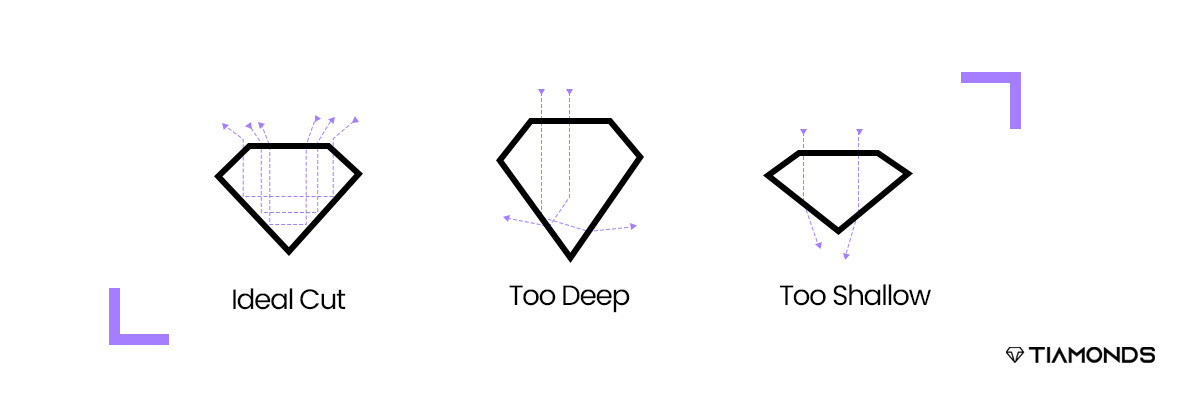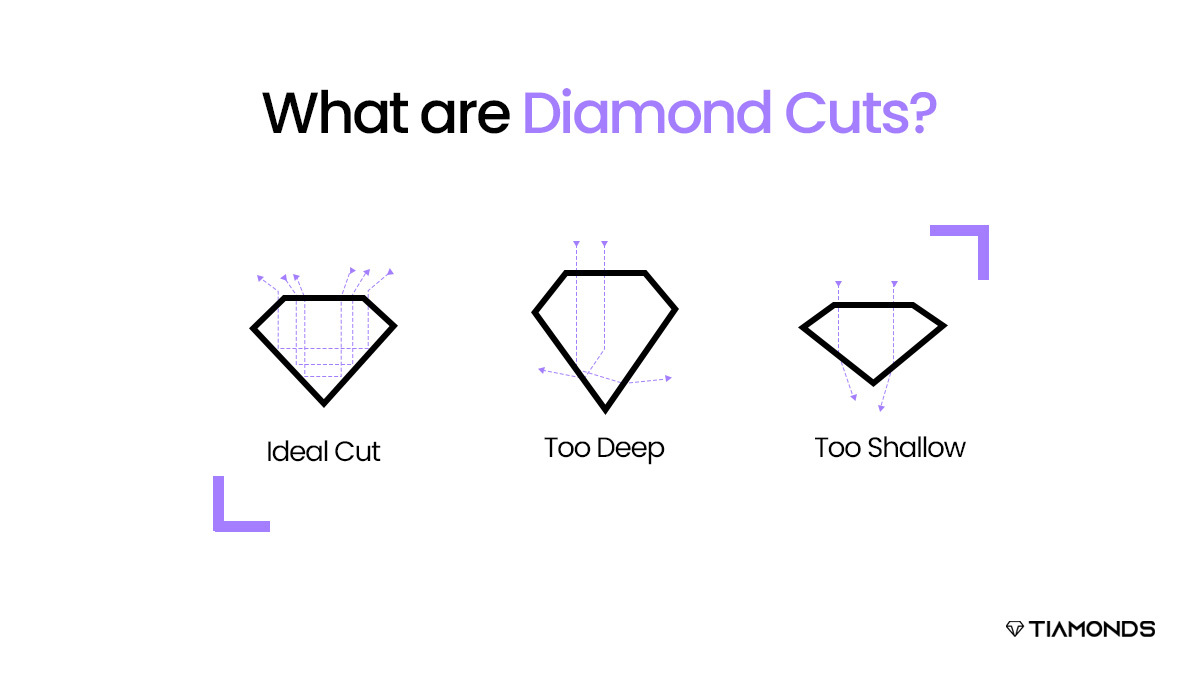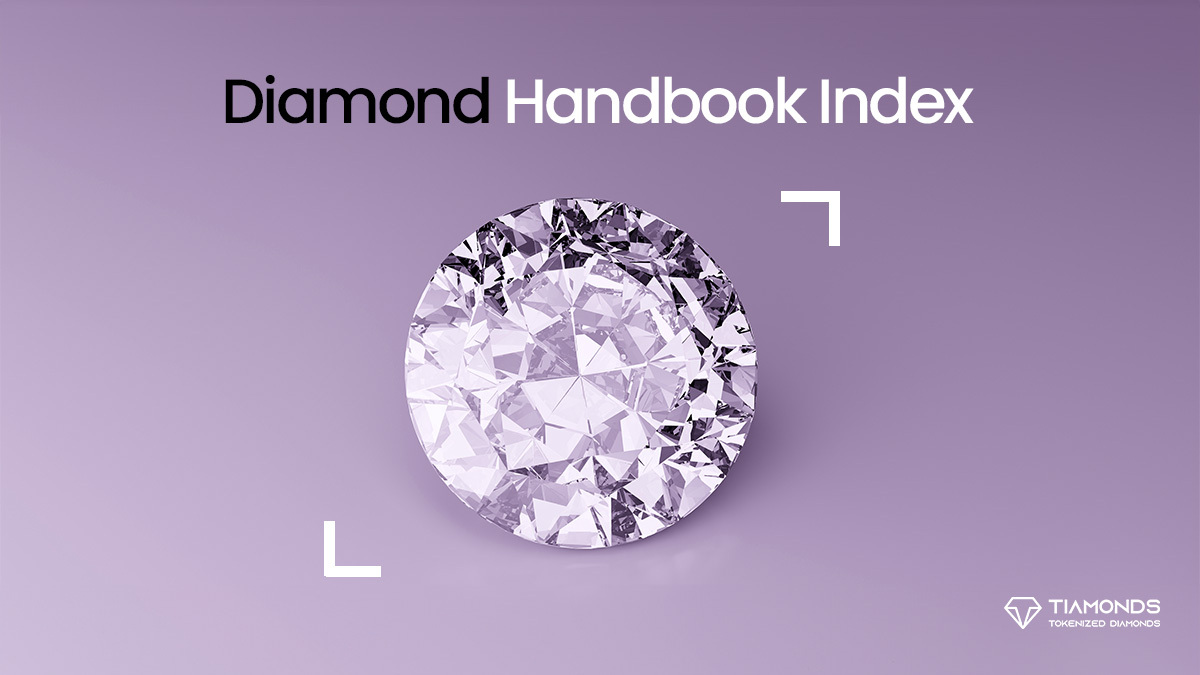Diamonds have exceptional light-transmission properties and brilliant brilliance. The term “diamond cuts” does not refer to the shape of the diamond (round, heart, oval, marquise, pear). But it rather to the manner in which the facets of the diamond interact with light. Gemstones must be fashioned with meticulous craftsmanship and artistry to ensure proportions, symmetry, and polish, in order to exhibit the sparkling return of light exclusive to diamonds.
Regarding the purchase of a diamond, the cut is the most critical of the four Cs. Diamond cutting is a complex subject, but purchasing a diamond with an exquisite cut is not.
The stone’s ultimate value and aesthetic appeal reflect the attainment of optimal diamond cuts. Furthermore, it is the most intricate and technically challenging to analyze among all the 4Cs of diamonds. The GIA determines the cut grade of the standard round brilliant diamond, the most commonly found shape in diamond jewelry, by calculating the proportions of the facets that impact the diamond’s appearance when viewed from the front. By utilizing these proportions, the GIA determines the cut grade of the standard round brilliant diamond, which is the shape most commonly found in diamond jewelry.
GIA Guidelines
GIA determines the optimal diamond cut by analyzing the diamond’s ability to manipulate light to produce desirable visual effects, including:
Brightness: The diamond’s inside and outside white light reflections constitute its brilliance.
Fire: The dispersion of white light into every hue in the rainbow constitutes fire.
Scintillation: The pattern of light and dark regions produced by projections within the diamond, as well as the quantity of sparkle it emits.
The design and craftsmanship of the diamond are also considered in determining its cut grade by the GIA. The GIA takes into consideration factors such as the diamond’s girdle thickness (which impacts its durability), the symmetry of its facet structure, and the standard of polish on those facets.
Diamond Cuts versus Diamond Shapes
People often use the terms shape and cut interchangeably. The grading of diamonds based on the four C’s reveals a distinction.
The diamond’s overall contour or figure determines its shape: oval, square, round, or rectangular.
Cut refers to the process of dividing the diamond’s surface into numerous minute facets. The size and orientation of its facets influence the path of light through a diamond. This has an effect on the diamond’s apparent size and degree of brilliance. The grades of diamond cuts range from superb to poor.
It is possible to cut standard diamonds into more elaborate configurations, including emerald, pear, cushion, heart, asscher, radiant, and others. The majority of online diamond merchants permit shape-based diamond searches.
Diamonds are frequently characterized as “princess cut,” “emerald cut,” or “cushion cut.” Bear in mind that the terms “emerald” and “cushion” denote the overall aesthetic quality of the diamond rather than its cut grade. The complete description of a diamond will contain additional details regarding its cutting and the rating of that cut.

Fundamental Elements of Diamond Cuts
Proportions: Angles, depth, and table size, among other diamond proportions, significantly influence the manner in which light reacts with the gemstone. A diamond with proper proportions refracts and reflects light, creating a magnificent, fiery display of hues and scintillation.
Facets: Diamonds are conventionally faceted, with each facet strategically positioned to reflect and capture light. The round brilliant cut, which has 57 or 58 facets, including the iconic table, the crown, a gird, and pavilion facets, is the most prevalent diamond shape.
Symmetry: The perfect symmetry of the diamond’s shape and the accuracy with which the facets lineup also influence its overall aesthetic value. Symmetry produces a more scintillating display by ensuring uniform distribution of light.
Polish: The polish quality of a diamond has an impact on both the uniformity and transparency of its surface. An impeccably polished diamond facilitates the unimpeded transmission of light.
Grading Scale for Diamond Cuts
Two primary factors are responsible for determining the grade of a diamond cut. The initial component is the material itself, which is undergoing the cutting process. Subsequently, experts classify the cut quality of round brilliant diamonds into one of the following five grades: poor, excellent, very good, good, or poor.
Excellent: These diamonds maximize their fire, brilliance, and glitter through precise proportions and flawless cuts.
Very Good: Diamonds of this quality are exquisitely cut. While they are marginally lower quality than excellent-grade diamonds, they are remarkably similar.
Good: The diamonds’ cut imparts a certain degree of brilliance to the specimen; nevertheless, certain aspects may appear disproportionately large.
Fair: Light readily passes through the sides and bottom of a diamond of the fair grade. Due to this rationale, fair-cut diamonds may not be optimal as focal stones in a ring, but they may be acceptable as smaller side stones.
Poor: These cut diamonds are, as the designation implies, the least desirable and, fortunately, the rarest.
The GIA Diamond Cut Scale is the definitive scale for classifying diamond cuts and comprises five grades spanning from Excellent to Poor for standard round brilliant diamonds in the D-to-Z diamond color range.
How Does the Price of Diamonds Depend on Their Cut?
Every variety of diamond cut alters the assessment of proportions, and even the slightest variation in this aspect can impact the stone’s value. Here, the comparison focuses on the table, breadth, and depth. Moreover, their ratios have a direct impact on the quality of diamond facets.
In addition to other variables that affect the cost of diamonds, specialists always consider the following three:
The symmetry exhibited by every facet, excluding the proportions of critical diamond parameters;
The degree of brilliance, scintillation, and fire (via the construction of 3D computer models and the utilization of laboratory equipment); The caliber of final touches (via the examination of diamond polishing).
The slightest of details determine the value of diamonds. Furthermore, in regards to a diamond cut, attractiveness is not a matter of opinion. It consists of two fundamental components: the precise dimension of the facets and the ideal profundity of the cut.
Selecting the Finest Diamond Cut
Amid the majority of the 4 C’s (clarity, color, carat weight, and carat weight included), there exists a favorable equilibrium between aesthetic appeal and monetary worth.
To illustrate the concept of diamond clarity, there is a threshold (typically between VS1 and VS2) beyond which an enhancement in grade will not yield a discernible improvement in aesthetic appeal. A VS1 or VS2 diamond will probably appear immaculate and clear to the unaided eye.
On the contrary, diamond cuts are distinct. No concessions should be made for this grade. Although it is possible to conceal intermediate grades in clarity or color, and even low-carat diamonds can possess a radiant and attractive appearance, a diamond with a poor cut grade is unlikely to sparkle as intended.




